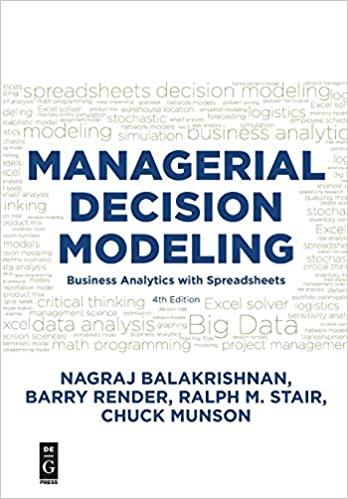Suppliers frequently offer quantity discounts to their customers to entice large orders. Consider the following all-units quantity
Question:
Suppliers frequently offer quantity discounts to their customers to entice large orders. Consider the following all-units quantity discount schedule.
Units ordered .................... Price per unit
1−999 ......................................... $50.00
1,000−4,999 .............................. $45.00
≥ 5,000 ...................................... $40.00
With the help of binary variables, an all-units quantity discount schedule can be incorporated into a mixed integer program that determines order size. Let Q be a decision variable that represents the total amount purchased. Let qi be a decision variable that represents the total amount purchased if Q lies in interval i of the price schedule. In other words, Q will equal q1 or q2 or q3, depending on the quantity purchased. Also, let Yi be a binary variable that equals 1 if Q lies in interval i of the price schedule, and 0 otherwise. For example, if 3,000 units are ordered, Q = q2 = 3,000, and Y2 = 1; meanwhile, q1 = q3 = Y1 = Y3 = 0.
Using these definitions, the purchasing cost in the objective function will then equal 50q1 + 45q2 + 40q1. One of the new constraints added to the program will be Q = q1 + q2 + q3. In addition to nonnegativity and binary constraints, what additional four constraints need to be added to ensure that the correct price is charged for the amount purchased? Define M as a very large number, and use it in two of the new constraints.
Step by Step Answer:

Managerial Decision Modeling Business Analytics With Spreadsheet
ISBN: 9781501515101
4th Edition
Authors: Nagraj Balakrishnan, Barry Render, Ralph Stair, Charles Munson





